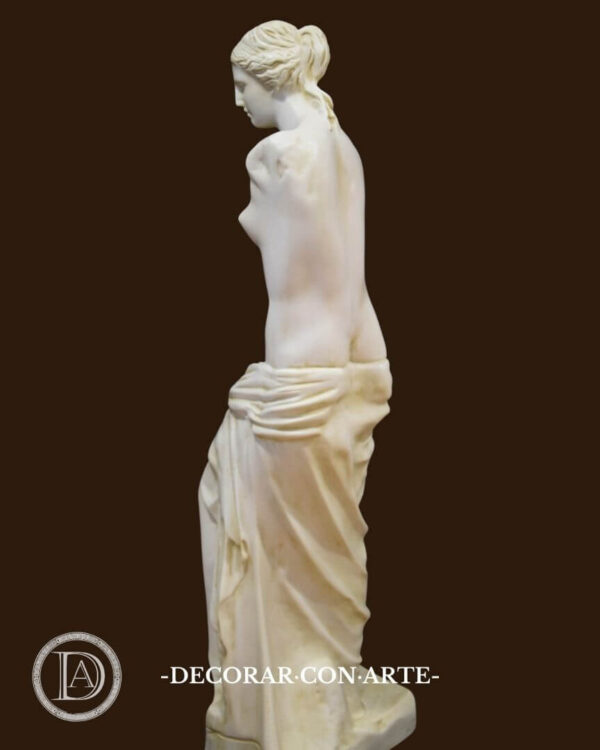Description
Sculpture- Venus of Milo. Reproduction made of molded marble (marble dust bonded with synthetic resin). Finished with aging patinas based on natural earth. The polished texture of the marble reproduces the unparalleled beauty of an original ancient marble piece.
Figure measurements: Height: 64 cm. Width: 17 cm. Depth: 17 cm.
Base: Height: 2 cm. Width: 15 cm. Depth: 12 cm.
Approximate weight: 11 kg.
Sculpture- Venus of Milo. The Aphrodite of Milos, better known as Venus de Milo, is one of the most famous sculptures of ancient Greece. It was created between 130 and 100 BCE, sculpted in marble in a slightly larger than life-size, and is believed to represent Aphrodite (called Venus by the Romans), the goddess of love and beauty. The author is anonymous, although it has traditionally been attributed to Praxiteles. It is currently housed in the Louvre Museum in Paris.
In classical mythology, Venus, identified in Rome with the Greek goddess Aphrodite, is the goddess of love, beauty, and fertility. The myth tells of Venus’s birth from the waters, arising from the foam generated by the fall into the sea of the genitals of the sky god, Uranus, mutilated by his son Cronus-Saturn. The aquatic origin of the goddess emphasizes Venus’s connection with water as a symbol of fertility, regeneration, and life. Venus was represented with symbolic attributes such as the rose and the mirror, and animals such as the dove or the swan, and she represents love in all its facets, ranging from universal harmony to human desire and passion, beauty, and seduction.
Venus is attributed with loves from various lovers, both divine and human, from Vulcan, the god of smiths and fire, her legitimate husband, or his brother, Mars, the god of war, to mortals such as the beautiful Adonis, for whose death she descended to Hades, or the Trojan prince Anchises, from whom she bore Aeneas, considered by the Romans as their mythical ancestor.


























Reviews
There are no reviews yet.